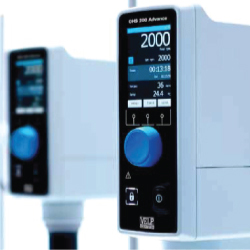
![]() 27 Nov 2025
27 Nov 2025
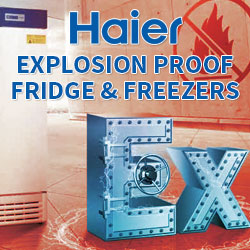
![]() 01 Nov 2025
01 Nov 2025
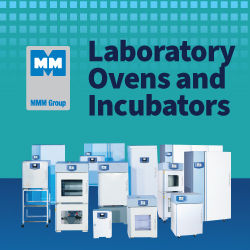
![]() 07 Mar 2025
07 Mar 2025

![]() 01 Nov 2024
01 Nov 2024
![]() 18 Dec 2025
18 Dec 2025
Accurate, modular heating for digestion and sample preparation.
Rowe Scientific now offers the VELP ECODryBlock range – a flexible family of digital dry block systems for COD digestion and general sample heating in environmental and life science laboratories. With intuitive touch control, excellent temperature stability and strong safety features, ECODryBlock systems provide a compact, modern alternative to traditional digesters and block heaters.
Safe, controlled heating for demanding methods
Consistent performance, flexible configurations
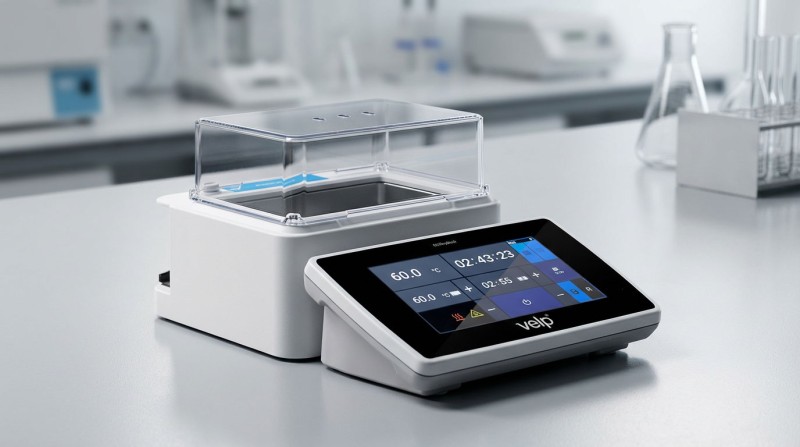
ECODryBlock System
Rowe Code: IT0747
Digital modular dry block system for accurate sample heating in life science and environmental laboratories. Supplied with ControlPad, one heating module. Order block for tubes separately.
|
Safety
Performance
Lab features
|
|
ECODryBlock System COD 24
Rowe Code: IT0748
Pre-configured ECODryBlock system for routine COD (Chemical Oxygen Demand) analysis using 24 × 16 mm vials. Supplied with ControlPad, module, transparent cover and dedicated COD block.
ECODryBlock System COD 4
Rowe Code: IT0749
ECODryBlock system configured for 4 × 42 mm high-volume COD tubes, suited to demanding industrial and research applications. Supplied with ControlPad, module and 4-position COD block.
|
Safety
Performance
COD Features
|
|
ECODryBlock Module (no ControlPad)
Rowe Code: IT0750
Additional ECODryBlock heating module supplied without ControlPad, designed to expand capacity or create a second temperature zone on existing systems.
 |
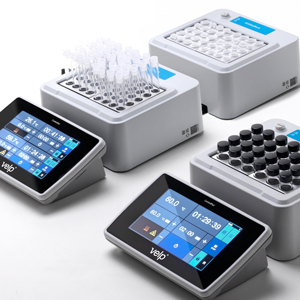
![]() 21 Nov 2025
21 Nov 2025
Rowe Scientific Pty Ltd is pleased to welcome Bentley Instruments as a new supplier partner, further strengthening our support for dairy laboratories and processors throughout Australia.
Bentley Instruments manufactures advanced analytical instruments for the measurement of milk and dairy products, providing laboratories with fast, reliable and highly accurate data on everything from raw milk to processed products such as cream, yoghurt, ice cream and frozen yoghurt.
Founded in 1982, Bentley Instruments focuses exclusively on analytical and automation solutions for the dairy sector. Over more than four decades, the company has developed a strong global footprint by concentrating on instruments that deliver:
High precision and reliability in demanding laboratory environments
Robust, computer-controlled systems that streamline workflows
Proven performance in milk composition and hygienic quality testing
Their technology includes pioneering work in applying flow cytometry to routine milk analysis, which has contributed to Bentley Instruments being widely recognised in milk and dairy product laboratories worldwide.
By adding Bentley Instruments to our portfolio, Rowe Scientific can now offer dairy laboratories:
Access to specialised milk and dairy analysers backed by a long-standing global supplier
The convenience of local stock, local advice and local service through Rowe Scientific’s national network
Support in selecting instruments that align with regulatory requirements, quality standards and production goals
Our team will work closely with Bentley Instruments and with our clients to ensure the right configuration of instruments, accessories and support for each facility.
Bentley Instruments’ philosophy aligns closely with Rowe Scientific’s own commitment to the laboratory sector. Their product development is guided by key principles:
Quality: instruments engineered for long-term, dependable operation
Simplicity: intuitive interfaces that reduce training time and operator error
Value: a focus on lifetime value and productivity, not just initial purchase price
Service & support: responsive help when issues arise, to minimise downtime and keep testing programmes on track
These priorities complement our purpose at Rowe Scientific: to keep our clients supplied with the scientific tools they need to do their work.
If you operate in the dairy sector and would like to discuss how Bentley Instruments’ solutions could support your laboratory or plant, contact your local Rowe Scientific representative.
Rowe Scientific looks forward to working with Bentley Instruments to provide innovative, reliable solutions for dairy testing laboratories across Australia.

![]() 30 Apr 2024
30 Apr 2024
SAFETY
PERFORMANCE
High tech features
|
|
|
|
|
The DIGITAL models have a capability of up to 200 Ncm of stirring torque which provides excellent performance for many stirring tasks. All models features a brushless motor, SmartChuck™ technology and full set of safety features.
|
SAFETY
PERFORMANCE
HIGH TECH FEATURES
|
|
Do you require stirring shafts? |
|
|
Floating blades
|
Folding blade
|
Fixed blade
|
Propeller
|
|
|
|
|
|
|
|
Blade Ø (mm)
|
93
|
60
|
50
|
60
|
|
Shaft Ø (mm)
|
7
|
7
|
7
|
7
|
|
Shaft length (mm)
|
400
|
400
|
400
|
400
|
|
Speed range
|
M-H
|
M-H
|
M-H
|
M-H
|
|
Viscocity range
|
VL-L
|
VL-L
|
VL-L
|
VL-L
|
|
|
Two blades open as the speed rises which generates an axial flow in the container, from the top towards the bottom. Particularly recommended for stirring in narrow neck containers, e.g. flasks.
|
The blade automatically falls into line during rotation generates an axial flow in the container, from the top towards the bottom. Particularly recommended for stirring in narrow neck containers.
|
The fixed blade generates an axial flow in the container, from the top towards the bottom. Use at medium-high speed for whirling light solids, for flocculations, mixing thickening agents, and stirring sludge.
|
It generates an axial flow in the container with suction of the substance from the bottom towards the top with localised occurences of shearing forces.
|
|
|
6 hole paddle
|
Turbine
|
Turbo propeller
|
Anchor
|
|
|
|
|
|
|
|
Blade Ø (mm)
|
69
|
49
|
46
|
45
|
|
Shaft Ø (mm)
|
7
|
7
|
7
|
8
|
|
Shaft length (mm)
|
450
|
450
|
450
|
450
|
|
Speed range
|
L-M
|
M-H
|
M-H
|
L-H
|
|
Viscocity range
|
L-M
|
M-H
|
M-H
|
M-H
|
|
|
Generates a tangential flow with reduced turbulence and gently mixes the product.
|
Generates a radial flow with suction of the product from the top towards the bottom, with high turbulence and high shearing forces.
|
Generates an axial flow in the container with suction of the substance from the top towards the bottom with low shearing forces. Limited danger of any contact of the blade with the walls of the product’s container.
|
Generates a tangential flow with high shearing forces on the ends. This limits the possibility of sedimentation on the walls of the container.
|
 |
